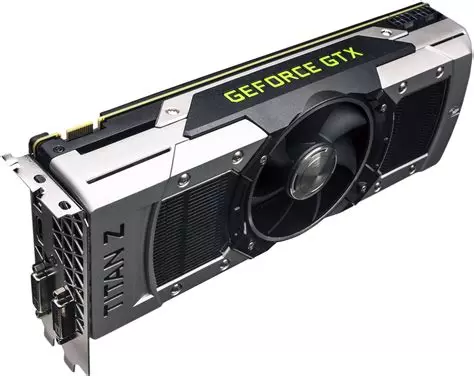
Hardware Components. Graphical Processing Unit
The graphics card, also referred to as a video card or GPU, is essential for activities that require visual and graphic capabilities. It relieves the CPU of handling graphics and video processing tasks, enabling the CPU to concentrate on different functions and enhancing the general system performance.

Nvidia dual-chip GeForce GTX Titan Z graphics card with two GK110 graphics processing units
Key Features of a Graphics Card:
- GPU (Graphics Processing Unit): The core component of the graphics card, is designed specifically to efficiently handle graphics and video data. It includes numerous cores made for parallel processing, enabling it to efficiently manage intricate graphical tasks.
- Memory: Graphics cards come with specific memory (such as GDDR6) to store graphics data like textures, framebuffers, for quick access by the GPU. Increased memory enables better quality textures and improved performance.
- Memory Capacity: Memory capacity, measured in gigabytes (GB), impacts the performance of graphics. Increased storage space enables the storage of more intricate textures and visuals.
- Graphics Interface: This decides the connection between the graphics card and the motherboard. PCI Express (PCIe) is the prevailing standard, featuring different lane setups (x16 being the most prevalent for graphic cards). AGP, which stands for Accelerated Graphics Port, is an outdated interface that is no longer utilized in contemporary systems.
- Integrated Graphics: In certain systems, the CPU may have built-in graphics processing capabilities. Although not as strong as dedicated graphics cards, these integrated options are capable of managing simple graphic tasks and are suitable for everyday use or less demanding applications.


